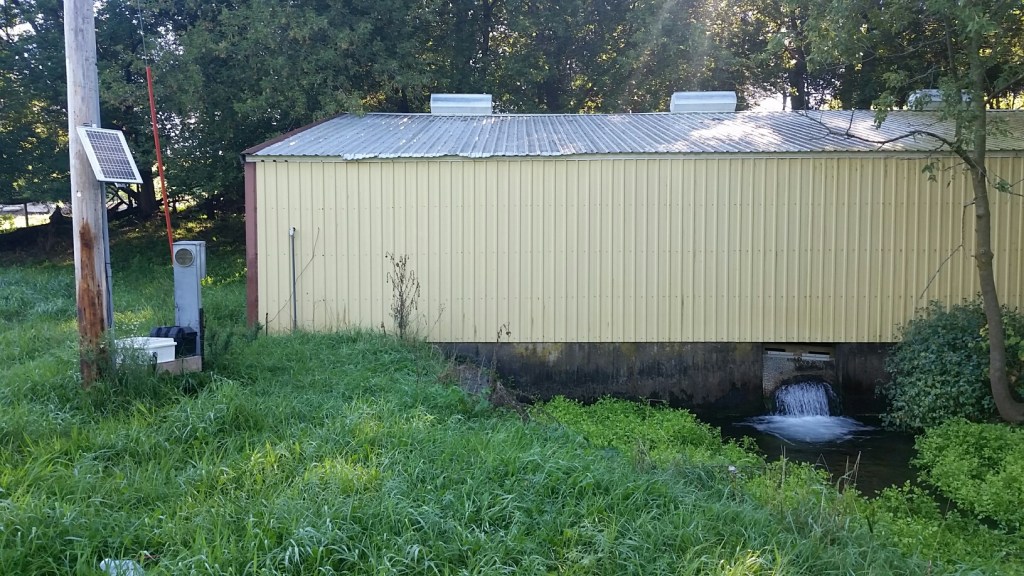Groundwater Monitoring
Most of the Iowa Water Quality Information System network is devoted to stream sampling. However, two sensors have been measuring nitrate in groundwater springs at the Iowa DNR Big Spring and Manchester fish hatcheries for the past year. Conclusion: nitrate in northeast Iowa groundwater is really high.
Since late last year, nitrate concentrations in the Manchester sensor have been consistently higher than all other IIHR sites, averaging 18.9 mg/L (ppm), almost double the drinking water limit. Maximum concentrations there have been around 25 mg/L.

Nitrate concentrations at the Big Spring site are lower but still elevated, averaging 12.4 mg/L. Concentrations also change much more rapidly at the Big Spring site. This is because of the Karst topography and numerous sinkholes in the area around Big Spring. These geological features link surface processes to groundwater aquifers, rapidly transporting water downward. Thus during rains, low nitrate surface water dilutes higher nitrate groundwater in the area draining to Big Spring.
The area around Manchester, on the other hand, has limited Karst and few sinkholes. Depth to the bedrock is greater, from 10-80 feet depending on the location. An overburden of sand covers the bedrock, which can store nitrate for longer periods of time compared to the thin layers of soil atop the bedrock around Big Spring. Greater capacity for nitrate and water storage likely explains the higher average nitrate at Manchester.
These results illustrate that nitrate pollution is not just a problem of the heavily-tiled Des Moines Lobe. Corn and soybean production on thin soils near bedrock can also deliver a lot of nitrate to aquifers and the stream network.
Shown below is the spring at Manchester.
